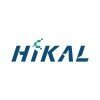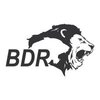


i
Medreich
Work with us
![]()
Filter interviews by
Medreich Interview Questions and Answers
32 Interview questions
Selecting an HPLC column involves considering factors like analyte properties, separation goals, and method conditions.
1. Analyte Properties: Consider polarity, size, and charge of the analyte. For example, use C18 columns for non-polar compounds.
2. Separation Goals: Determine if you need resolution, speed, or sensitivity. For instance, use a shorter column for faster analysis.
3. Mobile Phase Compatibility: Ensure...
A universal detector is a versatile analytical tool used to identify various compounds in chromatography.
Commonly used in chromatography techniques like HPLC and GC.
Detects a wide range of compounds, including organic and inorganic substances.
Examples include UV-Vis detectors, mass spectrometers, and refractive index detectors.
Allows for simultaneous detection of multiple analytes in a single run.
UV/Visible spectroscopy operates in the wavelength range of 200 to 800 nm, useful for analyzing chemical compounds.
Wavelength Range: UV/Visible spectroscopy typically covers wavelengths from 200 nm (ultraviolet) to 800 nm (visible light).
UV Region: The UV region (200-400 nm) is crucial for studying electronic transitions in molecules, such as π to π* and n to π* transitions.
Visible Region: The visible region (400-...
UV spectroscopy uses ultraviolet light to analyze the absorption and transmission of substances.
Ultraviolet (UV) light ranges from 10 nm to 400 nm in wavelength.
Commonly used UV light sources include deuterium lamps and tungsten lamps.
UV spectroscopy is widely used in chemical analysis, including pharmaceuticals.
It helps in determining the concentration of compounds based on their absorbance.
HPLC uses various detectors to identify and quantify compounds in a sample, enhancing analysis accuracy.
UV-Vis Detector: Measures absorbance of UV or visible light; commonly used for organic compounds.
Fluorescence Detector: Detects compounds that fluoresce; highly sensitive for trace analysis.
Refractive Index Detector: Measures changes in refractive index; suitable for non-UV absorbing compounds.
Conductivity Detec...
The stationary phase in HPLC is the solid or liquid material that interacts with analytes, facilitating their separation during analysis.
The stationary phase can be polar or non-polar, affecting the separation mechanism.
Common stationary phases include silica gel, C18, and C8.
In reverse phase HPLC, the stationary phase is non-polar (e.g., C18), while the mobile phase is polar.
In normal phase HPLC, the stationary p...
Gas chromatography is a technique for separating and analyzing compounds in a gaseous state.
Used to analyze volatile substances like gases and liquids.
Commonly applied in environmental testing to detect pollutants.
Utilized in the food industry to analyze flavor compounds.
Essential in pharmaceuticals for purity testing of drugs.
Involves a mobile phase (gas) and a stationary phase (liquid or solid).
I manage stress through effective time management, open communication, and maintaining a healthy work-life balance.
Prioritize tasks using a to-do list to focus on urgent and important activities.
Practice mindfulness techniques, such as deep breathing or meditation, to stay calm under pressure.
Maintain open communication with team members to address issues before they escalate.
Take regular breaks to recharge and av...
I have handled instruments such as calipers, micrometers, spectrophotometers, and pH meters in my previous role as a Quality Control Officer.
Calipers
Micrometers
Spectrophotometers
pH meters
ROI stands for Return on Investment, while LOD stands for Limit of Detection.
ROI is a financial metric used to evaluate the efficiency or profitability of an investment.
LOD is the lowest concentration of a substance that can be reliably detected by a particular analytical procedure.
ROI is typically expressed as a percentage, representing the ratio of net profit to the initial investment.
LOD is important in analyti...
Medreich Interview Experiences
53 interviews found
(2 Questions)
- Q1. Basic guidelines
- Q2. CMC technical knowledge
(2 Questions)
- Q1. Expectations and benefits
- Q2. Salary Negotiation
Interview Preparation Tips
(2 Questions)
- Q1. Principles of hplc, gc, ir
- Ans.
Principles of HPLC, GC, and IR involve separation of compounds based on different physical and chemical properties.
HPLC (High Performance Liquid Chromatography) separates compounds based on their affinity for the stationary phase and mobile phase.
GC (Gas Chromatography) separates compounds based on their boiling points and affinity for the stationary phase.
IR (Infrared Spectroscopy) identifies compounds based on their ...
- Q2. Difference between roi and lod
- Ans.
ROI stands for Return on Investment, while LOD stands for Limit of Detection.
ROI is a financial metric used to evaluate the efficiency or profitability of an investment.
LOD is the lowest concentration of a substance that can be reliably detected by a particular analytical procedure.
ROI is typically expressed as a percentage, representing the ratio of net profit to the initial investment.
LOD is important in analytical c...
(1 Question)
- Q1. Expected salary
I appeared for an interview in Apr 2025, where I was asked the following questions.
- Q1. Can you provide a self-introduction?
- Q2. Why do you prefer to work at Medreich?
- Q3. How important are you for this job?
Interview Preparation Tips
(3 Questions)
- Q1. Which company equipments are used in your previous company?
- Ans.
Various company equipments were used in my previous company, including computers, printers, scanners, projectors, and video conferencing systems.
Computers
Printers
Scanners
Projectors
Video conferencing systems
- Q2. Full form of USFDA?
- Q3. Jarman made uhlmann
Production Officer Interview Questions & Answers
posted on 26 Nov 2024
Question related diff regulatory authority
Shedules
(1 Question)
- Q1. Basic iformmation about pharmaceutics
(2 Questions)
- Q1. Quality assurance roles and responsibilities
- Q2. QMS related activities
(1 Question)
- Q1. Package discussion
I applied via LinkedIn and was interviewed in Jan 2024. There were 2 interview rounds.
(1 Question)
- Q1. Phone call interview, where he initially told me to introduce myself, later he asked about the basic questions on microbiology 1. What is microbiology 2. How you explain me about the microbiology 3. Exampl...
(2 Questions)
- Q1. 1. Self-introduction 2. 60% questions asked was about my academic project, so be thorough with your project knowledge 3. Questions related to skills which are mentioned on my CV
- Q2. He explained about the job role, work timing and all
Interview Preparation Tips
- Basic microbiology
- Bacteria
- fungi
- Toxins
- Academic project
If you know the answer you should answer confidently, if you don't know the answer boldly tell "Sir I can not recall it"
Your communication skill is very important, don't lag while explaining
If they ask about salary expectations just say "As per the company standards the salary given for the fresher is good for me, As I'm a fresher, For me gaining knowledge and Skills is more important than money"
I appeared for an interview in Oct 2024, where I was asked the following questions.
- Q1. What is the wavelength range for UV/Visible spectroscopy?
- Ans.
UV/Visible spectroscopy operates in the wavelength range of 200 to 800 nm, useful for analyzing chemical compounds.
Wavelength Range: UV/Visible spectroscopy typically covers wavelengths from 200 nm (ultraviolet) to 800 nm (visible light).
UV Region: The UV region (200-400 nm) is crucial for studying electronic transitions in molecules, such as π to π* and n to π* transitions.
Visible Region: The visible region (400-800 n...
- Q2. What type of light is used in UV spectroscopy?
- Q3. What are the chemical formulas for ethyl alcohol, benzene, and acetic acid?
- Ans.
Ethyl alcohol, benzene, and acetic acid are important organic compounds with distinct chemical formulas and properties.
Ethyl Alcohol: Also known as ethanol, its chemical formula is C2H5OH, commonly found in alcoholic beverages.
Benzene: A fundamental aromatic hydrocarbon with the formula C6H6, used in the production of various chemicals and plastics.
Acetic Acid: Known for its vinegar-like smell, its formula is CH3COOH, ...
- Q4. What detectors are used in High-Performance Liquid Chromatography (HPLC)?
- Ans.
HPLC uses various detectors to identify and quantify compounds in a sample, enhancing analysis accuracy.
UV-Vis Detector: Measures absorbance of UV or visible light; commonly used for organic compounds.
Fluorescence Detector: Detects compounds that fluoresce; highly sensitive for trace analysis.
Refractive Index Detector: Measures changes in refractive index; suitable for non-UV absorbing compounds.
Conductivity Detector: ...
Interview Preparation Tips
(1 Question)
- Q1. Principle behind to determine the end point in granulation .
- Ans.
The principle behind determining the end point in granulation is to achieve the desired particle size and distribution for optimal product performance.
The end point in granulation is typically determined by monitoring the particle size distribution using techniques such as sieve analysis or laser diffraction.
The desired end point may vary depending on the specific product requirements, such as flowability, compressibil...
Interview Preparation Tips
I appeared for an interview before Feb 2024.
(2 Questions)
- Q1. Types of granulation process
- Ans.
Granulation process involves the formation of granules from powder particles.
Wet granulation: involves adding a liquid binder to the powder mixture
Dry granulation: involves compacting the powder mixture without the use of liquid binder
Fluid bed granulation: involves spraying a liquid binder onto the powder particles in a fluidized bed
Roller compaction: involves compacting the powder between two rollers to form a sheet,...
- Q2. Role of Temperature and DP
- Ans.
Temperature and DP play crucial roles in production processes, affecting product quality and efficiency.
Temperature control is essential for maintaining product consistency and quality.
Dew point (DP) is important for preventing condensation and ensuring proper drying processes.
Monitoring temperature and DP helps in optimizing production efficiency and reducing energy consumption.
Examples: In food production, temperatur...
Interview Preparation Tips
Top trending discussions






Medreich Interview FAQs
The duration of Medreich interview process can vary, but typically it takes about less than 2 weeks to complete.
Tell us how to improve this page.
Medreich Interviews By Designations
- Medreich Production Officer Interview Questions
- Medreich Executive Production Interview Questions
- Medreich Quality Control Officer Interview Questions
- Medreich QC Officer Interview Questions
- Medreich Executive Interview Questions
- Medreich Executive Quality Assurance Interview Questions
- Medreich Regulatory Affairs Officer Interview Questions
- Medreich Production Interview Questions
- Show more
Interview Questions for Popular Designations
Overall Interview Experience Rating
based on 46 interview experiences
Difficulty level
Duration
Interview Questions from Similar Companies
Medreich Reviews and Ratings
based on 616 reviews
Rating in categories
Bangalore / Bengaluru
8-13 Yrs
₹ 6.7-11.5 LPA
|
Executive
226
salaries
| ₹3.3 L/yr - ₹7.9 L/yr |
|
Officer
193
salaries
| ₹2 L/yr - ₹5.3 L/yr |
|
Officer II
123
salaries
| ₹2.8 L/yr - ₹5 L/yr |
|
Assistant Manager
103
salaries
| ₹6.3 L/yr - ₹12.4 L/yr |
|
Deputy Manager
101
salaries
| ₹10.7 L/yr - ₹15.8 L/yr |
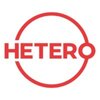
Hetero
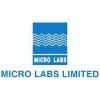
Micro Labs

Biological E
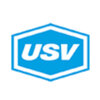
USV
- Home >
- Interviews >
- Medreich Interview Questions


